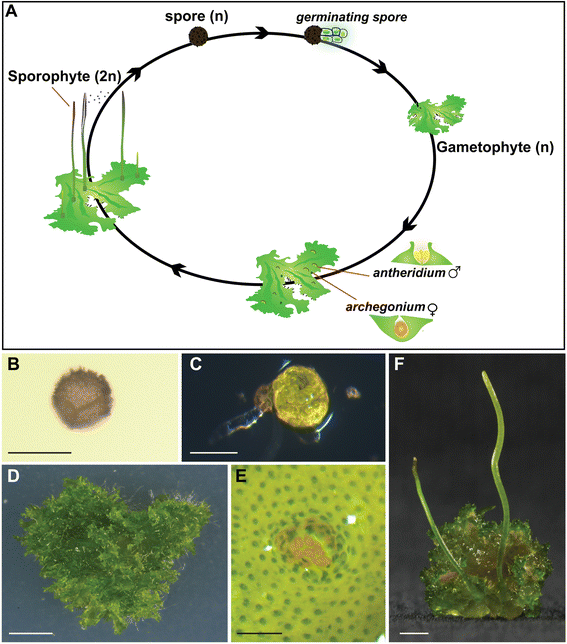Establishment of Anthoceros agrestis as a model species for studying the biology of hornworts
- PMID: 25886741
- PMCID: PMC4393856
- DOI: 10.1186/s12870-015-0481-x
Establishment of Anthoceros agrestis as a model species for studying the biology of hornworts
Abstract
Background: Plants colonized terrestrial environments approximately 480 million years ago and have contributed significantly to the diversification of life on Earth. Phylogenetic analyses position a subset of charophyte algae as the sister group to land plants, and distinguish two land plant groups that diverged around 450 million years ago - the bryophytes and the vascular plants. Relationships between liverworts, mosses hornworts and vascular plants have proven difficult to resolve, and as such it is not clear which bryophyte lineage is the sister group to all other land plants and which is the sister to vascular plants. The lack of comparative molecular studies in representatives of all three lineages exacerbates this uncertainty. Such comparisons can be made between mosses and liverworts because representative model organisms are well established in these two bryophyte lineages. To date, however, a model hornwort species has not been available.
Results: Here we report the establishment of Anthoceros agrestis as a model hornwort species for laboratory experiments. Axenic culture conditions for maintenance and vegetative propagation have been determined, and treatments for the induction of sexual reproduction and sporophyte development have been established. In addition, protocols have been developed for the extraction of DNA and RNA that is of a quality suitable for molecular analyses. Analysis of haploid-derived genome sequence data of two A. agrestis isolates revealed single nucleotide polymorphisms at multiple loci, and thus these two strains are suitable starting material for classical genetic and mapping experiments.
Conclusions: Methods and resources have been developed to enable A. agrestis to be used as a model species for developmental, molecular, genomic, and genetic studies. This advance provides an unprecedented opportunity to investigate the biology of hornworts.
Figures

References
Publication types
MeSH terms
Associated data
LinkOut - more resources
Full Text Sources
Other Literature Sources

